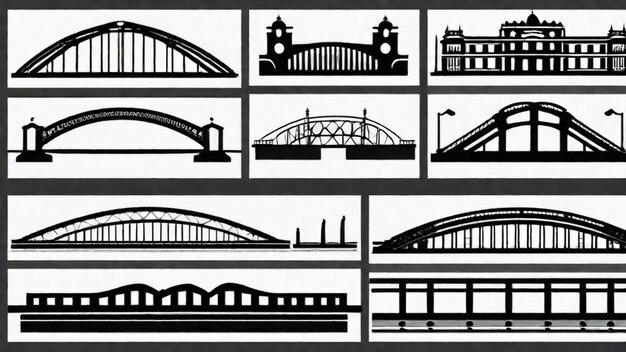Bridges have long been symbols of connection, unifying disparate lands and cultures. As we marvel at the incredible feats of human engineering, one cannot help but ponder, what is the largest bridge in the world? The encapsulation of this question embodies a sense of curiosity and reverence, framing a challenge not only to understand civilization’s architectural achievements but to reflect on the metaphorical bridges that bind us in a deeper sense. With a detailed exploration of the largest bridge, we can also contemplate how these grand structures resonate with spiritual themes, particularly within a Christian perspective.
The Danyang–Kunshan Grand Bridge in China holds the title of the largest bridge in the world, stretching an astonishing length of over 164 kilometers (102 miles). Designed primarily as a viaduct for the Beijing-Shanghai High-Speed Railway, this engineering marvel was completed in 2010 and opened for use in 2011. Its construction involved meticulous planning, innovative material use, and deft engineering, demonstrating humanity’s extraordinary capability to overcome natural obstacles and enhance connectivity.
The sheer scale of the Danyang–Kunshan Grand Bridge provokes admiration and wonder. It traverses rice paddies, rivers, and vast stretches of land. Not only does it enhance transportation efficiency, but it also serves as a pivotal artery in one of the most densely populated regions of the globe. Such expansive structures urge us to reflect on the purpose of our own lives: Do we serve to connect others like the bridges we create? Are we building pathways of understanding and love in a world often marked by division?
When contemplating this engineering wonder, one also cannot overlook the intricate theological implications of bridges in the biblical narrative. Just as a bridge physically connects two locations, the teachings of Christ create a spiritual bridge between humanity and God. In John 14:6, we find the declaration, “I am the way, the truth, and the life.” Here, we see how faith serves as a spiritual conduit, guiding believers toward divine truth and life everlasting. The metaphor of a bridge invites introspection into our own roles in fostering connections that reflect Christ’s love and grace.
The design and construction of bridges also bring to light the principles of stewardship and responsibility. They necessitate the careful use of resources to create something that benefits society at large. Similarly, Christians are called to steward their gifts and resources for the common good. In Genesis, God gives humanity the charge to cultivate and care for the earth and its inhabitants. We must ask ourselves: how are we using our talents and abilities to create bridges in our communities, and even beyond those confines?
Alongside the Danyang–Kunshan Grand Bridge, there are numerous other remarkable bridges that stretch across continents, each with its own unique story. Consider the Great Belt Bridge in Denmark, which elegantly connects the islands of Zealand and Funen. Its cascading suspension cables and elegant design are a testament to both artistic creativity and functional engineering. In the United States, the Golden Gate Bridge stands as a cultural icon, known not only for its beauty but also for the challenges it overcame during construction amid economic turmoil and fierce natural elements. Each of these structures provides a narrative of human resilience and innovation.
As we ponder the spiritual parallels these engineering feats offer, it raises a playful question: If bridges can connect land masses, what unifying bridges can we build through acts of kindness and expressions of faith in our daily lives? Each small act can create ripples of unity and understanding. Every smile offered, every hand held, builds pathways of compassion that can reach across vast chasms of misunderstanding.
Building these “bridges” difficulty, however, often requires us to confront personal biases, cultural stereotypes, and preconceived notions about others. This venture is not without its challenges, yet as Christians, we are called to transcend those barriers and facilitate healing and relationship-building. Romans 12:18 exhorts us to “If it is possible, as far as it depends on you, live at peace with everyone.” This directive is harmoniously echoed in the human endeavor to construct physical bridges, which also symbolize peace and reconciliation.
Moreover, infrastructure development, especially bridges, brings forth critical discussions about environmental impacts and sustainability. The Danyang–Kunshan Grand Bridge, while an unparalleled engineering triumph, also coexists within an ecosystem requiring our diligence and respect. The Christian ethos challenges us to consider our impact on creation. Are we, like skilled engineers, crafting plans that lead to harmony between humankind and nature? This dialogue is ever so crucial in the context of biblical stewardship—a calling that represents our duty to care for the earth entrusted to us by the Creator.
As we conclude this exploration of the largest bridge in the world, it is essential to appreciate not only the architectural achievements that it represents but also the spiritual and ethical challenges embedded within its existence. Bridges, whether grand or humble, serve as powerful reminders of the connections we must build in our lives. They call us to pursue unity, seek understanding, and engage in active stewardship of our relationships and resources.
In the end, each bridge, each act of compassion, and each endeavor reflects the greater framework of divine love—a love that beckons us forward into a unified, interconnected community that mirrors the heart of God. What bridges will you choose to construct today?



